Estadio Carlos Tartiere
| Capacity | 30 500 |
|---|---|
| 142 (Press seats) | |
| 460 (Disabled seats) | |
| Country | Spain |
| City | Oviedo |
| Clubs | Real Oviedo |
| Inauguration | 20/09/2000 (Real Oviedo – Partizan Belgrade, 0–2) |
| First game | 17/09/2000 (Real Oviedo – UD Las Palmas, 2–2) |
| Construction | 1998–2000 |
| Cost | €47 million |
| Design | Carlos Buxadé Ribot, Joan Margarit Consarnau, Emilio Llano |
| Address | Calle de Ricardo Vazquez Prada, Barrio de la Eria, 33013 Oviedo, Asturias |
Advertisement
Estadio Carlos Tartiere – stadium description
In 1998 club and municipal authorities in Oviedo reached an understanding to relocate Real to a new venue. With nearly 30,000 seats the new stadium was to meet future demand for tickets, while also catering for the club’s commercial needs (22 skyboxes, large presidential suite). The project cost some €47 million.
By year end groundbreaking took place on Estadio Nuevo Carlos Tartiere, as its temporary name said. The ‘nuevo’ part (new) was used to distinguish between the stadium and its predecessor, located just 600 meters east. Both of the grounds were honouring the same patron, Carlos Tartiere, Real Oviedo’s first president. Currently ‘nuevo’ isn’t needed any more as the old stadium at Buenavista was demolished in 2003.
Real moved to the new home on Sept 17, 2000, bringing spotlight to one of the most modern grounds across Europe at that time. Opening wasn’t the most fortunate one, but it was believed the stadium provides great nurturing environment for Real to thrive.
The ground has captivating architecture, especially with its southern part being integrated into local hill, lying 30 meters below neighbouring buildings. The blue roof is Oviedo’s largest cover and despite location between hills is visible from afar.
24 gates lead inside, where uniquely shaped stands reveal three large towers in the corners Used for office space and vertical crowd circulation, the towers provide support for large roof trusses. With just 6m away from the pitch, Estadio Carlos Tartiere provides great sightlines to all fans inside.
There are office spaces created under stands, accommodating a music school among other enterprises. But despite its modern appearance, the stadium suffered from several issues. Its turf has been of very low quality due to insufficient lighting (opaque roof) and uncleansed ground beneath the stadium, residue of a ceramics factory. Criticism was also raised over crowd distribution upon entry/exit, which caused congestion. Unfortunately, Real hasn’t grown into their new stadium despite years of occupation, which means there is a different ‘crowd problem’ at hand.
The national team of Spain played two games here, both official qualifiers for international tournaments, against Bosnia and Herzegovina in 2001 and against Latvia in 2007. A U21 encounter against Poland followed in 2011. All of the game ended with victories for Spain.
Just north of the stadium there is a smaller secondary ground, Campo Hermanos Llana, where Astur FC play the role of anchor tenants.
How Estadio Carlos Tartiere compares to other LaLiga stadiums?
Advertisement
Pictures
-

18.08.2013 © Raúl S.G. (cc: by-nc-nd) 
16.08.2007 © Jorge 
30.01.2010 © Jsmq (cc: by) 
06.11.2006 © jlmaral (cc: by-nc-nd) 
06.11.2006 © jlmaral (cc: by-nc-nd) 
06.11.2006 © jlmaral (cc: by-nc-nd) 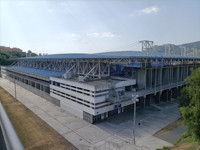
08.08.2025 © Miguel Ciołczyk Garcia 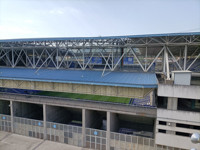
08.08.2025 © Miguel Ciołczyk Garcia 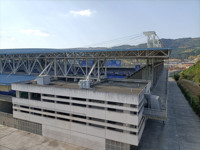
08.08.2025 © Miguel Ciołczyk Garcia 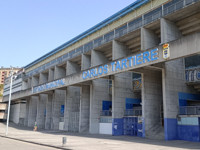
08.08.2025 © Miguel Ciołczyk Garcia 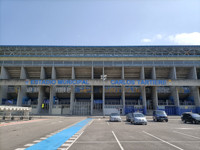
08.08.2025 © Miguel Ciołczyk Garcia 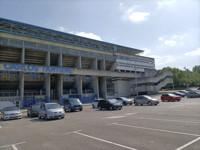
08.08.2025 © Miguel Ciołczyk Garcia 
08.08.2025 © Miguel Ciołczyk Garcia 
06.11.2006 © jlmaral (cc: by-nc-nd) 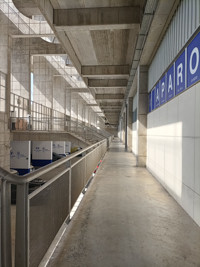
08.08.2025 © Miguel Ciołczyk Garcia 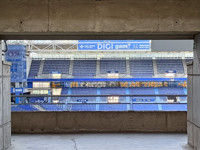
08.08.2025 © Miguel Ciołczyk Garcia 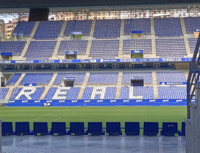
08.08.2025 © Miguel Ciołczyk Garcia 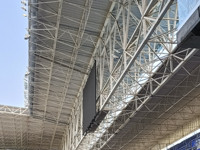
08.08.2025 © Miguel Ciołczyk Garcia 
03.09.2014 © pedalin pitu 
03.09.2014 © pedalin pitu 
16.01.2014 © Dawlad Ast 
26.05.2013 © Dawlad Ast 
26.05.2013 © Dawlad Ast 
08.08.2012 © Dawlad Ast 
24.06.2013 © Dawlad Ast 
24.02.2013 © Dawlad Ast 
13.12.2014 © pedalin pitu 
16.02.2014 © pedalin pitu 
16.02.2014 © pedalin pitu 
23.02.2009 © Álvaro Campo (cc: by-nc-nd) 
24.05.2009 © Álvaro Campo (cc: by-nc-nd) 
24.05.2009 © Álvaro Campo (cc: by-nc-nd) 
09.06.2013 © Dawlad Ast 
21.04.2013 © Saúl Tuñón Loureda 
21.04.2013 © Dawlad Ast 
21.04.2013 © Saúl Tuñón Loureda 
15.03.2015 © pedalin pitu 
15.03.2015 © pedalin pitu 
15.03.2015 © pedalin pitu 
21.09.2014 © pedalin pitu
 StadiumDB
StadiumDB
